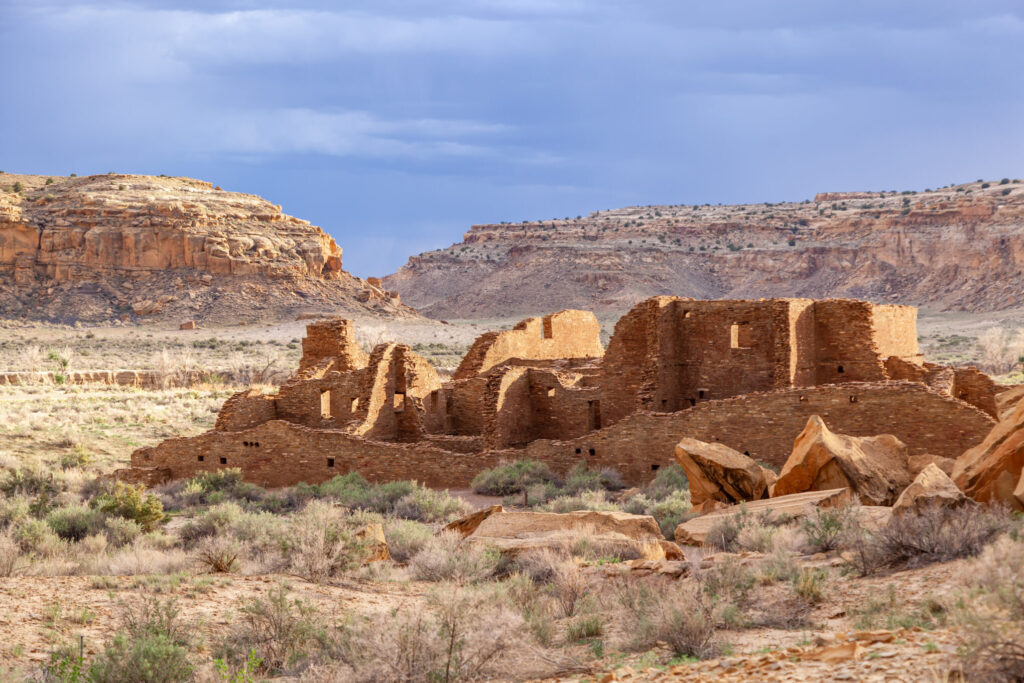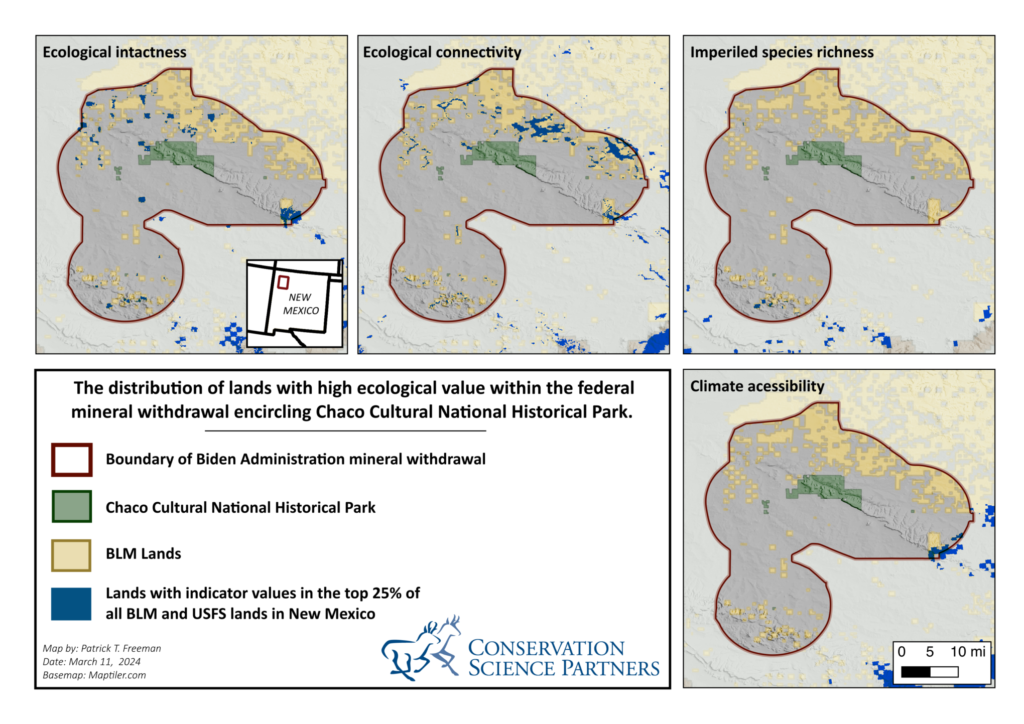
In northwest New Mexico’s San Juan Basin lies Chaco Canyon, a site of enormous historical, cultural, and spiritual significance to the region’s Indigenous peoples including members of the Pueblo, Navajo, and Apache communities. The canyon boasts a wealth of archaeological sites dating from 850 A.D. and has some of the most well-preserved ancient ruins north of Mexico–the remnants of what was once a central hub of commercial, political, and spiritual life for the region’s Indigenous inhabitants. It remains a site of pilgrimage for those seeking to commune with their ancestors. In the face of persistent threats from oil and gas development in the area, the Biden Administration took action in June of 2023 to formally protect the 10 miles surrounding the existing Chaco Culture National Historical Park from oil and gas drilling by formally withdrawing these lands from consideration for leasing by the Bureau of Land Management (BLM) for the next 20 years. In an analysis commissioned by the Center for American Progress, Conservation Science Partners also determined that these new protections would safeguard over 60,000 acres of land harboring New Mexico’s highest-value ecological resources, helping to connect and protect wildlife, fortifying the case for this administrative action.
Our analysis focused specifically on identifying lands managed by the BLM and U.S. Forest Service (USFS) in New Mexico that had exceptional value for several critical indicators of ecological significance and could be threatened by future oil and gas development. These indicators included the degree to which the landscape is unaltered by human activity, can facilitate habitat connectivity for plants and animals, provide habitat for threatened species, and influence the ability of those plants and animals to access favorable climatic conditions under climate change. We defined lands of exceptional value as those with values of the above indicators in the top 25% of all BLM and USFS lands in the state of New Mexico.
We ultimately found that almost 20 percent of the federally managed land that was unleased and without formal protection within the approved withdrawal area had exceptional value relative to other BLM and USFS in New Mexico. This enormous land area included around 31,000 acres of the most ecologically intact landscapes in New Mexico as well as 27,000 acres of some of the most important areas for maintaining landscape connectivity. The Biden Administration’s withdrawal of these landscapes from consideration for oil and gas development provides significant protections against their future degradation and highlights a key opportunity for aligning cultural and natural resource heritage preservation. You can learn more about our analysis and the ramifications of this important executive action in a recent column published by the Center for American Progress.


